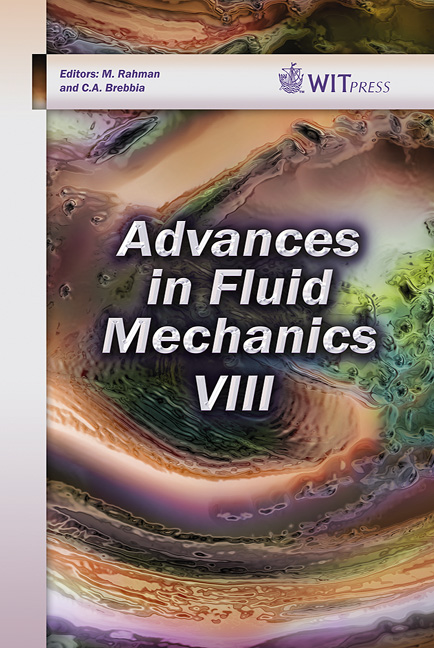Particle Level Set Implementation On The Finite Volume Method
Price
Free (open access)
Transaction
Volume
69
Pages
11
Page Range
103 - 113
Published
2010
Size
3,031 kb
Paper DOI
10.2495/AFM100091
Copyright
WIT Press
Author(s)
M. Elmi & M. Kolahdouzan
Abstract
Prediction of free surface elevation is one of the most important phenomena in the field of free surface flow modelling. To date different procedures have been introduced to capture the free surface. In the current study, a Eulerian- Lagrangian Method named Particle Level Set (PLS) is developed to predict the location of free surface. The first implementation of this scheme was on the Finite Difference Method. This paper deals with the implementation of Particle Level Set on the Finite Volume mesh. IN the PLS scheme, computational particles were deployed in conjunction with LS function to raise the accuracy of function values. Results obtained from the developed model were compared with experimental and numerical results of dam break cited in the literature which represent the capability of method to predict high gradient free surface changes accurately. Keywords: free surface flow, particle level set method, finite volume method. 1 Introduction Multi-phase flow modelling is one of the most practical issues and many researchers try to implement it on their own area of expertise. Prediction of water surface elevation especially in the high gradient situations (i.e. Dam Break and Wave Breaking), is an example of multiphase flow. Different approaches have been introduced to have an accurate prediction of free surface which can be classified into two categories namely free surface tracking and free surface capturing [1]. According to free surface tracking methods, the location of free surface can be predicted by the use of Lagrangian characteristics of the flow. Although the Advances in Fluid Mechanics VIII 103 www.witpress.com, ISSN 1743-3533 (on-line) WIT Transactions on Engineering Sciences, Vol 69, © 2010 WIT Press doi:
Keywords
free surface flow, particle level set method, finite volume method





